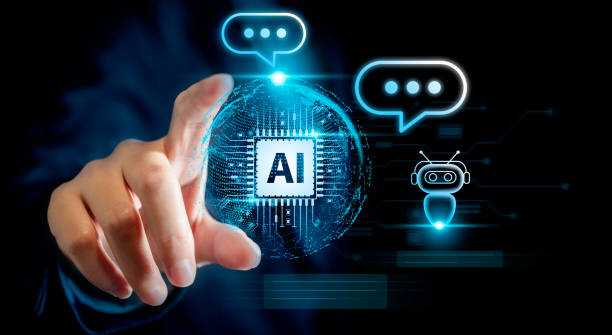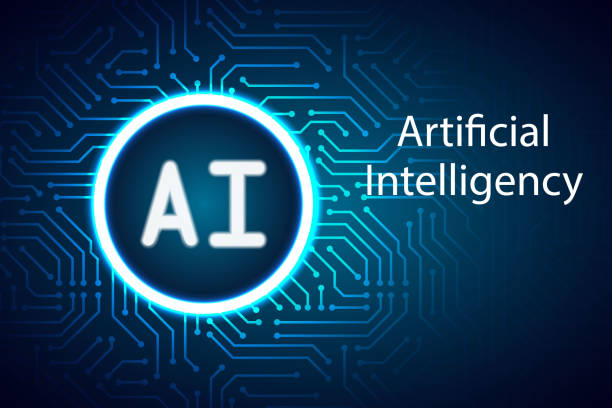What is an AI Robot? Definition and Concept
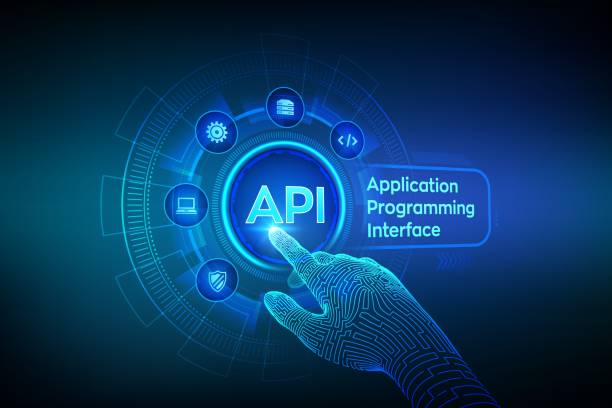
What is an AI Robot? Definition and Concept
In today’s world, the term #Artificial_Intelligence (AI) is increasingly heard.
But when it comes to an AI robot, what exactly is meant? Generally, an AI robot refers to a computer program or a physical machine that is capable of performing tasks that typically require human intelligence.
These tasks include learning, reasoning, problem-solving, natural language understanding, and even creativity.
An AI robot uses complex algorithms and models to process data, identify patterns, and make decisions.
The fundamental difference between a regular robot and an AI robot is that the AI robot is capable of learning and adapting to new conditions.
A regular robot is usually programmed to perform a series of pre-determined tasks and cannot independently cope with new situations.
In contrast, an AI robot can learn from its experiences and improve its performance.
This learning capability allows the AI robot to be used in a wider range of applications.
In short, an AI robot is a powerful tool that can help us perform many tasks.
From automating repetitive processes to providing valuable insights from data, an AI robot has the potential to change the way we live and work.
In later chapters, we will examine the various applications of AI robots in more detail.
Are you worried that your company’s old website is scaring away new customers? Rasaweb solves this problem with modern and efficient corporate website design.
✅ Increases your brand credibility.
✅ Helps to attract targeted customers.
⚡ Contact Rasaweb for free consultation!
Types of AI Robots Based on Application
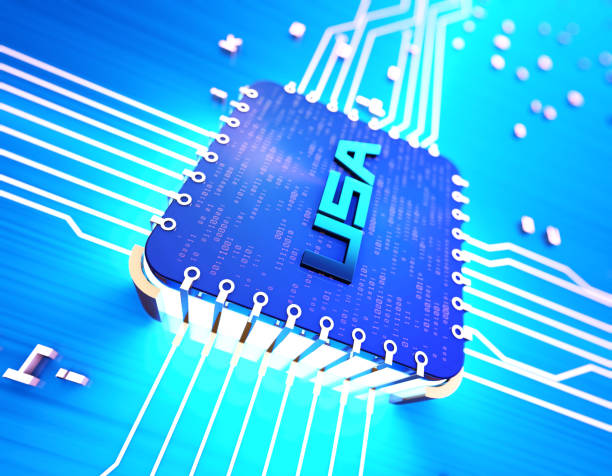
Types of AI Robots Based on Application
AI robots are divided into different categories based on the type of application and the task they perform.
Some of the most important types of these robots include:
- Chatbots: These robots are designed to interact with users through text or voice.
Chatbots can answer questions, provide information, register orders, and even act as a personal assistant.
Common examples include customer service chatbots, virtual assistants like Siri and Google Assistant. - Natural Language Processing (NLP) Robots: These robots are capable of understanding and producing human language.
These robots can be used for translating languages, summarizing texts, extracting information from text, and analyzing sentiments. - Computer Vision Robots: These robots are capable of seeing and interpreting images and videos.
These robots can be used for facial recognition, object identification, and medical image analysis. - Machine Learning Robots: These robots are capable of learning from data and improving their performance without the need for explicit programming.
These robots can be used for predicting trends, identifying fraud, and personalizing the user experience. - Decision-Making Robots: These robots are capable of making complex decisions based on data and pre-defined rules.
These robots can be used for supply chain management, process optimization, and risk management.
Each of these types of AI robots has its own advantages and disadvantages and is more suitable for specific applications.
Choosing the right type of AI robot depends on your specific needs and goals.
Amazing Applications of AI Robots in Various Industries
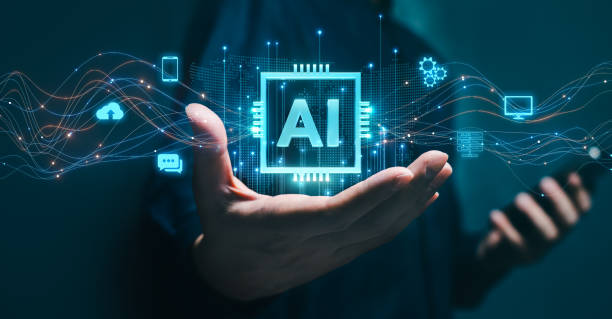
Amazing Applications of AI Robots in Various Industries
AI robots are creating significant transformations in various industries.
By providing innovative solutions, these robots help companies increase their efficiency, reduce costs, and offer better products and services.
Here are some of the amazing applications of AI robots in various industries:
- Healthcare: AI robots can help in diagnosing diseases, prescribing medications, performing complex surgeries, and providing personalized care to patients.
For example, surgical robots can perform surgery with greater accuracy and delicacy than human surgeons. - Finance: AI robots can help in detecting fraud, managing risk, providing financial advice, and automating banking processes.
For example, machine learning algorithms can identify suspicious patterns in financial transactions and prevent fraud from occurring. - Manufacturing: AI robots can help in automating production lines, controlling quality, and predicting machinery failures.
For example, industrial robots equipped with computer vision can identify defective parts and remove them from the production line. - Retail: AI robots can help in personalizing the customer experience, providing product recommendations, and automating warehouse processes.
For example, chatbots can answer customer questions and help them find the products they are looking for. - Transportation: AI robots can help in developing self-driving cars, optimizing routes, and managing transportation fleets.
For example, self-driving cars can navigate roads without the need for a human driver using sensors and AI algorithms.
These are just a few examples of the countless applications of AI robots in various industries.
With the increasing advancement of technology, it is expected that the applications of AI robots will become more extensive and complex in the near future.
| Industry | AI Robot Application |
|---|---|
| Healthcare | Disease Diagnosis, Robotic Surgery |
| Finance | Fraud Detection, Risk Management |
| Manufacturing | Production Line Automation, Quality Control |
| Retail | Personalizing Customer Experience |
| Transportation | Self-Driving Cars, Route Optimization |
Advantages and Disadvantages of Using AI Robots
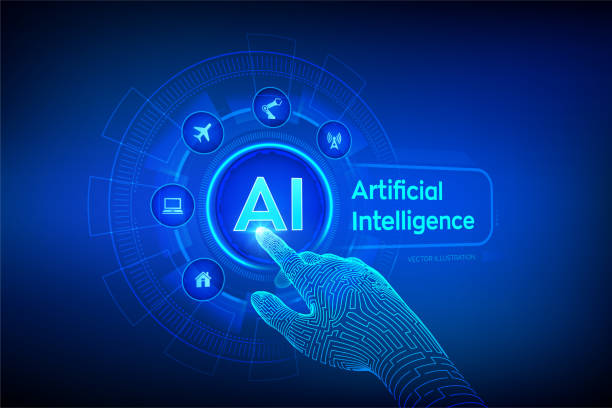
Advantages and Disadvantages of Using AI Robots
The use of AI robots has numerous advantages and disadvantages that should be carefully considered before deciding to use them.
Some of the most important advantages of using AI robots include:
- Increased Efficiency and Productivity: AI robots can perform tasks faster and more accurately than humans.
This leads to increased efficiency and productivity in various processes. - Reduced Costs: AI robots can reduce human labor costs.
Also, by reducing errors and improving quality, they can also reduce maintenance and repair costs. - Improved Quality: AI robots can improve the quality of products and services by performing tasks accurately and consistently.
- Access to More Data: AI robots can process large amounts of data and extract valuable insights from them.
- Automation of Repetitive Processes: AI robots can automate repetitive and tedious processes, allowing humans to focus on more creative and strategic tasks.
In addition to the advantages, the use of AI robots also has disadvantages:
- High Initial Cost: Implementing AI robots can require a high initial investment.
- Need for Expertise: Developing and maintaining AI robots requires expertise and technical knowledge.
- Ethical Concerns: The use of AI robots can raise ethical concerns about issues such as privacy, job security, and discrimination.
- Dependence on Data: AI robots need a lot of data to learn and function correctly.
If the data is incomplete or inaccurate, the performance of the AI robot will also be affected. - Lack of Flexibility: AI robots may not perform well when faced with unexpected and complex situations.
Ultimately, the decision on whether to use AI robots should be based on a careful assessment of its advantages and disadvantages and considering the specific conditions and needs of the organization.
Are you tired of your company’s website not meeting your expectations? With Rasaweb, design a professional website that showcases the true face of your business.
✅ Increase the attraction of new customers and sales leads
✅ Increase the credibility and trust of your brand among the audience
⚡ Get a free website design consultation!
Challenges in the Development and Implementation of AI Robots
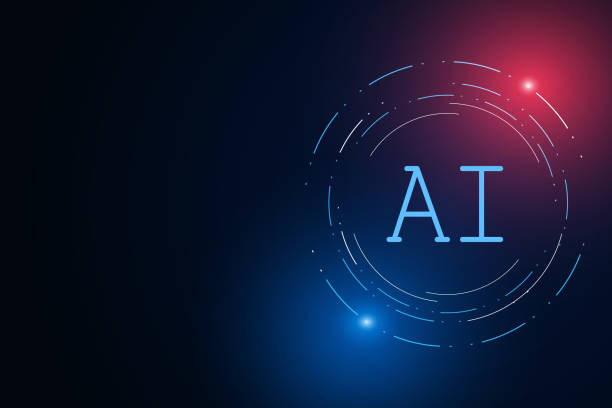
Challenges in the Development and Implementation of AI Robots
The development and implementation of AI robots is associated with numerous challenges.
These challenges can be technical, economic, social, and ethical.
Some of the most important of these challenges include:
- Lack of Training Data: AI robots need a lot of training data to learn and function correctly.
In many cases, collecting and preparing this data can be difficult and costly. - Complexity of Algorithms: AI algorithms are very complex, and understanding and developing them requires high knowledge and expertise.
- Problems with Interpretability: In some cases, it is difficult to understand why an AI robot made a particular decision.
This can reduce trust in the AI robot. - Concerns about Privacy: AI robots often have access to a lot of personal data.
This can create concerns about protecting the privacy of individuals. - Concerns about Job Security: The automation of processes by AI robots can lead to job losses.
- Ethical Issues: The use of AI robots can create complex ethical issues.
For example, who is responsible for the decisions that an AI robot makes? - Hardware Limitations: To run complex AI algorithms, powerful hardware is needed.
This hardware can be expensive. - Problems with Integration: Integrating AI robots with existing systems can be difficult and time-consuming.
Overcoming these challenges requires the joint efforts of researchers, industrialists, policymakers, and society.
By adopting appropriate approaches, the potential of AI robots can be used to improve human lives and at the same time prevent its potential risks.
The Future of AI Robots: Prospects and Possibilities
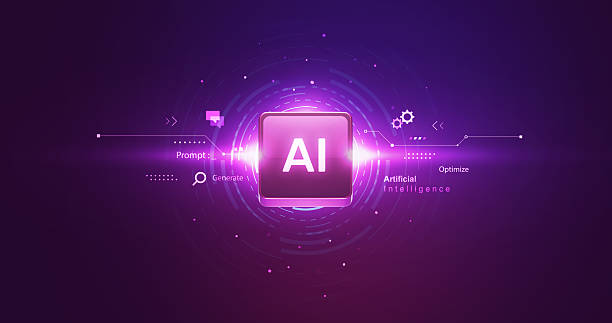
The Future of AI Robots: Prospects and Possibilities
The future of AI robots is bright and full of possibilities.
With the increasing advancement of technology, it is expected that AI robots will be used in a wider range of applications and play a more important role in human lives.
Some of the most important future prospects of AI robots include:
- Artificial General Intelligence (AGI): The ultimate goal of many AI researchers is to develop AI robots that can perform any task that humans do.
This type of AI is known as Artificial General Intelligence. - Greater Integration with Everyday Life: AI robots are expected to become increasingly integrated into our daily lives.
From virtual assistants to self-driving cars, AI robots will gradually become an integral part of our lives. - Development of Autonomous Robots: AI robots are expected to become increasingly autonomous and be able to make important decisions without the need for human intervention.
- New Applications in Various Industries: AI robots are constantly finding new applications in various industries.
For example, AI robots can be used in space exploration, scientific research, and natural resource management. - Increased Human-Robot Collaboration: It is expected that in the future, humans and AI robots will increasingly collaborate with each other.
This collaboration can help increase efficiency, improve quality, and solve complex problems.
However, it should also be noted that the development of AI robots also carries risks.
For example, if AI robots become autonomous weapons, they could pose a serious threat to global security.
Therefore, the development of AI robots needs to be done with care and responsibility.
How to Start Learning and Working with AI Robots
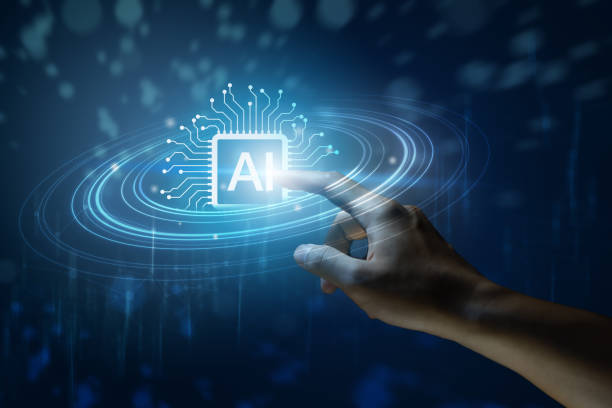
How to Start Learning and Working with AI Robots
If you are interested in learning and working with AI robots, there are several ways to get started.
Here are some of these ways:
- Learning Basic Concepts: First of all, you need to get acquainted with the basic concepts of artificial intelligence and machine learning.
There are many online and offline educational resources for this purpose.
You can use online training courses, books, and articles. - Choosing a Programming Language: To work with AI robots, you need to be familiar with a programming language.
Python is one of the most popular programming languages for artificial intelligence. - Using AI Libraries and Frameworks: AI libraries and frameworks are powerful tools that help you easily implement AI algorithms.
TensorFlow and PyTorch are among the most popular AI libraries and frameworks. - Doing Practical Projects: The best way to learn artificial intelligence is to do practical projects.
You can start by doing small and simple projects and gradually do more complex projects. - Participating in Courses and Workshops: Participating in courses and workshops can help you quickly improve your skills in the field of artificial intelligence.
- Reading Specialized Articles and Books: To stay up-to-date with the latest advances in artificial intelligence, you should regularly read specialized articles and books.
With effort and perseverance, you can become an AI robot expert and work in this field.
Introducing Practical Tools and Platforms for Working with AI Robots
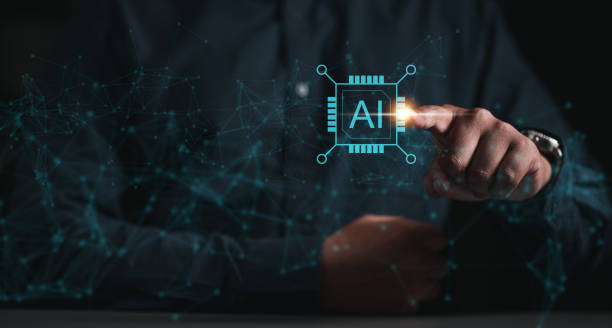
Introducing Practical Tools and Platforms for Working with AI Robots
To facilitate the development and implementation of AI robots, there are various tools and platforms that can help you.
Here are some of these tools and platforms:
- Google Colaboratory: A cloud-based development environment that allows you to run Python code in your browser.
Google Colaboratory is free and supports popular AI libraries such as TensorFlow and PyTorch. - Kaggle: An online platform for competing in machine learning projects.
Kaggle has many data sets that you can use to train your AI robots. - TensorFlow Playground: An interactive tool that allows you to learn how neural networks work.
- IBM Watson: A cloud-based AI platform that offers a range of AI services.
- Microsoft Azure AI: A cloud-based AI platform that offers a range of AI services.
- Amazon SageMaker: A cloud-based machine learning platform that allows you to build, train, and deploy machine learning models.
Choosing the right tool and platform depends on your specific needs and goals.
However, being familiar with these tools and platforms can help you develop and implement AI robots.
| Tool/Platform Name | Description |
|---|---|
| Google Colaboratory | Cloud-Based Development Environment |
| Kaggle | Machine Learning Project Competition Platform |
| TensorFlow Playground | Interactive Tool for Learning About Neural Networks |
| IBM Watson | Cloud-Based AI Platform |
| Microsoft Azure AI | Cloud-Based AI Platform |
| Amazon SageMaker | Cloud-Based Machine Learning Platform |
Are you losing potential customers due to an unprofessional website? Rasaweb is the answer! With our specialized corporate website design services:
✅ Increase the credibility and position of your business
✅ Experience attracting more targeted customers
⚡ Get a free design consultation now!
Ethical Considerations in the Design and Use of AI Robots
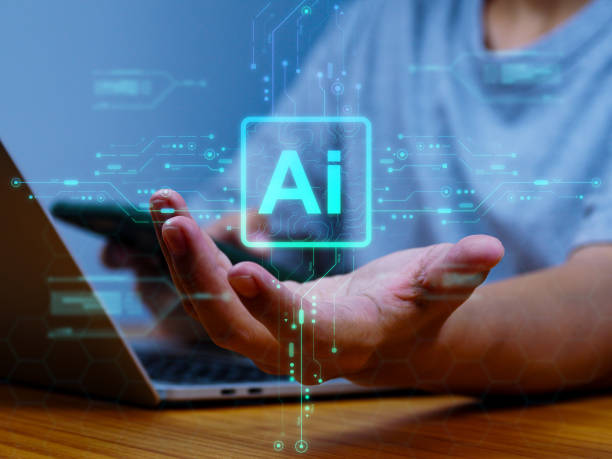
Ethical Considerations in the Design and Use of AI Robots
As mentioned earlier, the use of AI robots is associated with several ethical considerations.
These considerations must be carefully considered in the design and use of AI robots.
Some of the most important of these considerations include:
- Privacy: AI robots often have access to a lot of personal data.
It should be ensured that this data is securely stored and processed and that its misuse is prevented. - Transparency: It should be as transparent as possible why an AI robot made a particular decision.
This helps to increase trust in the AI robot. - Fairness: It should be ensured that AI robots operate fairly and without discrimination.
- Accountability: It should be clear who is responsible for the decisions that an AI robot makes.
- Job Security: The implications of automating processes by AI robots on the job security of individuals should be considered and solutions should be provided to reduce these implications.
- Control: It should be ensured that humans always have ultimate control over AI robots and can override their decisions if necessary.
Adhering to these ethical considerations can help ensure that AI robots are used responsibly and for the benefit of society.
Case Study of Successful Applications of AI Robots in Iran and the World
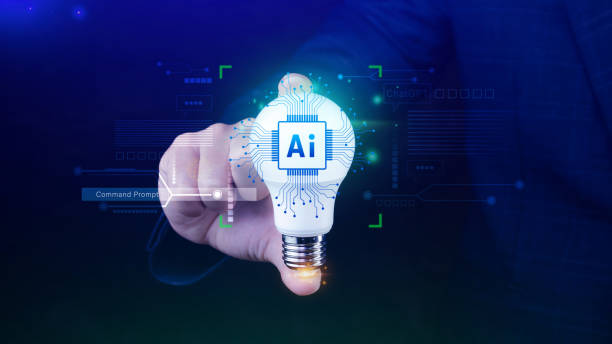
Case Study of Successful Applications of AI Robots in Iran and the World
To better understand the potential of AI robots, we can study case studies of its successful applications in Iran and the world.
Here are a few examples of these applications:
- Skin Cancer Detection Using Artificial Intelligence: IBM has developed a system using artificial intelligence that can detect skin cancer with high accuracy.
- Waymo Self-Driving Cars: Waymo, a subsidiary of Google, is developing self-driving cars that can navigate roads without the need for a human driver.
- Customer Service Chatbots: Many companies use chatbots to provide 24-hour customer service.
- Product Recommendation Systems: Online stores use AI-based product recommendation systems to provide personalized recommendations to customers.
In Iran, various companies and organizations are also using AI robots in various fields.
For example, some banks use AI-based fraud detection systems to prevent fraud.
Also, some manufacturing companies use AI robots to automate their production lines.
These case studies show that AI robots have great potential for solving problems and improving human lives.
FAQ
| Row | Question | Answer |
|---|---|---|
| 1 | What is an AI Robot? | An AI robot is a machine capable of understanding, reasoning, learning, and problem-solving, and it can perform complex tasks with relative autonomy. |
| 2 | What are the most important applications of AI robots? | The main applications include industrial production, customer service (chatbots), medicine and surgery, self-driving transportation, space exploration, and military affairs. |
| 3 | What is the main difference between an AI robot and a regular robot? | A regular robot only follows programmed instructions, while an AI robot can learn from data, make decisions, and adapt itself to new environments. |
| 4 | How do AI robots learn? | They learn through machine learning algorithms (such as deep learning, reinforcement learning) and processing a vast amount of data, identifying patterns and improving their performance. |
| 5 | Can AI robots have feelings? | Currently, AI robots do not have real feelings in the human sense. They can mimic or recognize emotions, but they do not understand or experience them. |
| 6 | What are the current limitations of AI robots? | Limitations include the need for a lot of data, the inability to understand abstract concepts, the lack of real creativity, ethical issues, and the challenges of generalizability in new environments. |
| 7 | What is the role of artificial intelligence in the development of Humanoid robots? | Artificial intelligence helps humanoid robots walk, maintain their balance, understand their surroundings, interact with humans, and perform complex tasks. |
| 8 | How is the future of AI robots predicted? | It is predicted that AI robots will become smarter, more autonomous, and capable of performing more complex tasks in everyday life and industry, and their interaction with humans will increase. |
| 9 | Can AI robots replace all human jobs? | It is unlikely that all human jobs will be replaced. Robots will take over many repetitive and dangerous tasks, but jobs that require creativity, empathy, and moral judgment will remain. |
| 10 | What ethical and social challenges are raised by the expansion of AI robots? | Challenges include issues related to privacy, data security, ethical decision-making by robots, the impact on employment, and accountability in the event of an error. |
And other services of Rasa Web Advertising Agency in the field of advertising
Smart Digital Advertising: A novel service to increase website traffic through precise audience targeting.
Smart Marketplace: A dedicated service for increasing website traffic based on intelligent data analysis.
Smart Brand Identity: A fast and efficient solution for attracting customers by focusing on dedicated programming.
Smart Brand Identity: A novel service for increasing customer behavior analysis through the use of real data.
Smart Conversion Rate Optimization: Designed for businesses that are looking to increase sales through intelligent data analysis.
And over a hundred other services in the field of internet advertising, advertising consulting, and organizational solutions
Internet Advertising | Advertising Strategy | Advertorial
Resources
What is Artificial Intelligence? Arvan Cloud
,Introducing the Best AI Tools – Virgool
,What is Artificial Intelligence? What are its applications? | Fars News Agency
,Best AI tools for everyday tasks – Zoomit
? Are you ready to transform your business in the digital world? Rasaweb Digital Marketing Agency, with expertise in modern UI website design and comprehensive marketing strategies, is with you to have a powerful and influential presence in the online space.
📍 Tehran, Mirdamad Street, next to the Central Bank, South Kazerun Alley, Ramin Alley No. 6

